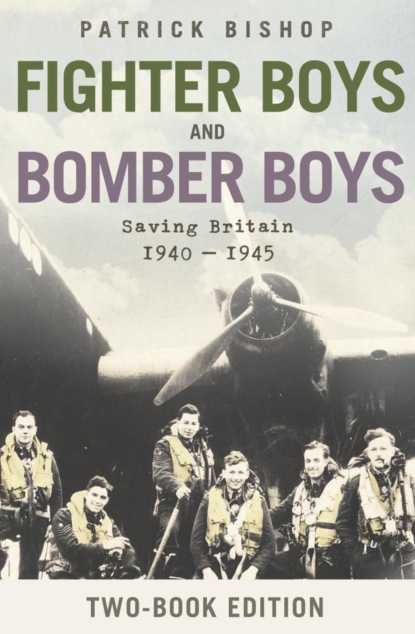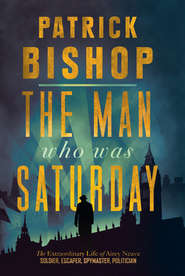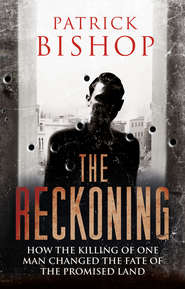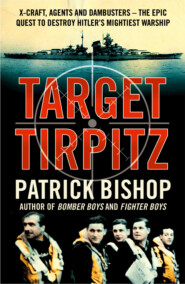По всем вопросам обращайтесь на: info@litportal.ru
(©) 2003-2024.
✖
Fighter Boys and Bomber Boys: Saving Britain 1940-1945
Настройки чтения
Размер шрифта
Высота строк
Поля
The new rules of air fighting were being made up with each clash. To succeed, merely to survive, required an adaptability that was found chiefly in the young. In the mayfly span of a fighter pilot’s effective life, young meant under twenty-two. The older pilots commanding the squadrons, in whom the parade ground rigidity of the old tactics were strongly ingrained, were for all their experience and flying skills often among the first to go. Roger Bushell, the peacetime barrister who had helped defend Johnny Freeborn and Paddy Byrne and moved up to command 92 Squadron, was shot down on his first day. He would be missed. The squadron was essentially a new creation, having been re-formed only the previous October. Bushell was moved from 601 Auxiliary Squadron to supervise the birth, overseeing training, the switch from Blenheim bombers to Spitfires and infusing the nascent squadron spirit with his personality. He was born in South Africa, moved to England and went to Wellington public school and Brasenose College, Oxford. He was tough, intelligent and warm-hearted, and a good drinker. He was also a sportsman, a superb skier, coaching the British team in the 1936 Winter Olympics. He had a permanently half-hooded eye, the result of a skiing accident, which gave him a truculent look.
Bushell had joined 601 Squadron in the mid 1930s, naturally embracing its credo of taking fun and flying equally seriously, making strong friendships and winning admirers throughout the service. His charm, the squadron chronicler recorded, was ‘magnetic and universal’.
(#litres_trial_promo) His forensic talents were at the disposal of all the squadron, fitter and pilot alike. Once he flew himself from London to a distant northern base to defend a ground-crew member, changing out of uniform and into wig and gown to demolish the authorities’ case. On the evening of 23 May, 92 Squadron set off on an evening patrol around Dunkirk. Bushell was leading, and when they encountered a formation of Heinkels, heavily protected by Me 109s and 110s, he ordered an attack. Tony Bartley heard him ‘swearing on the radio as he plunged into the bomber force’ with John Gillies and Paul Klipsch. All three were shot down. Klipsch was killed. Bushell and Gillies were captured. Bushell was last seen standing by his Spitfire, waving his scarf in farewell. He was a troublesome prisoner and was eventually murdered in March 1944 by the Gestapo after being captured in the aftermath of the Great Escape he helped to organize from Stalag Luft 111. He was, Brian Kingcome thought, ‘an amazingly great man’.
(#litres_trial_promo) The squadron diary admitted that the losses were ‘a very severe blow to us all’, and two days later 92 was moved to Duxford to rest and re-equip.
The 19 Squadron commander, Squadron Leader G. D. Stephenson, also went early, on the first day of Operation Dynamo. Once again there were more men than machines, and pilots, with the exception of section leaders, drew lots for who was to go. The twelve Spitfires left at breakfast time and encountered about twenty Stukas over the coast near Calais. They appeared to be unescorted, a circumstance that should have aroused suspicion, but caution vanished as the pilots, most of them going into their first real combat, saw the black crosses and the gull wings crawling unheedingly across the sky and prepared to attack. As they did so, thirty Me 110s came into view. One section, led by Flight Lieutenant G. E. Ball, broke off to engage them. The rest closed in on the Stukas. George Unwin, who had missed out in the draw, heard later what happened from the returning pilots. Stephenson, he said, ordered a Fighting Area Attack No. 1. ‘That meant a very slow closing speed in formation “vics” of three, attacking with a very slow overtaking speed so you could get a very good shot at it. That was the idea.’
(#litres_trial_promo) It worked, up to a point. The squadron shot down four, but then the 109s arrived. Pilot Officer ‘Watty’ Watson was hit by a cannon shell, baled out and disappeared. Stephenson was seen heading inland in a shallow glide, trailing blue smoke. It later turned out he landed safely but was taken prisoner. The squadron claimed five Stukas and two 109s, a reasonable return on their losses, if true. The arithmetic of the squadrons involved at Dunkirk, however, was no more reliable than that of the France-based units. Later they flew another patrol and were again ‘bounced’ by 109s. Sergeant C. A. Irwin was killed and Pilot Officer Michael Lyne shot in the leg. He nursed his Spitfire back across the Channel and crash-landed on Walmer Beach. This time it seemed that only one 109 had possibly been brought down, and that was unconfirmed.
Stephenson and Irwin were both very experienced men. Irwin was an ex-fitter, typical of the cadre of ground staff who, through ability and ambition, had got airborne and whose professionalism and technical expertise stiffened the pre-war squadrons. Stephenson, like White, had been at Cranwell and was therefore marked out for the RAF’s upper reaches. He was regarded as a brilliant pilot and had been an instructor at the Central Flying School. It was a teaching post, but it carried prestige in a service in which skill was of paramount importance. Like the 54 Squadron pilots, 19 Squadron decided after the first day that no matter how flawless the technique, the tactics that Stephenson and his generation epitomized were dead. ‘That was the end of going in slow,’ Unwin said. ‘In fact it was the end of all we knew because we realized we knew nothing. From then on it was get in fast and go out fast. And go close – a hundred yards. Get in close but go in fast and get out fast.’
(#litres_trial_promo)
Some of the younger pilots discovered almost at once that they were good at air fighting. Also that they enjoyed it. ‘Prof Leathart described ‘that lovely feeling of the gluey controls and the target being slowly hauled into the sights. Then thumb down on the trigger again and the smooth shuddering of the machine as the eight-gun blast let go.’
(#litres_trial_promo) The best of them were pushed forward to fill the holes in the commanders’ ranks. Following the loss of Roger Bushell, Brian Kingcome and Bob Tuck were posted to 92 Squadron as flight commanders. Leathart himself was put in command of 54 to replace Squadron Leader E. A. Douglas-Jones, who had led the squadron on its first offensive patrol on 16 May but had not flown with it since and relinquished command nine days later on grounds of ill-health.
Covering the evacuation meant that pilots were in the air two, three or sometimes even four times a day. Exhaustion set in quickly. Replacement squadrons arrived at the 11 Group bases to allow the spent units a rest. Some of the new arrivals had seen very little of the war and were slow to appreciate how serious things had become. On 28 May Al Deere returned to Hornchurch after a patrol and noticed that the dispersal areas normally occupied by 65 and 74 Squadrons now had Spitfires with unfamiliar markings. They belonged to 222 Squadron, sent in while 65 and 74 were rotated out for a rest. Later that evening Deere met one of the flight commanders, Douglas Bader, who questioned him closely. Bader, as a pre-war regular and an ex-Cranwell cadet, had become a figure of myth in the RAF by an extraordinary demonstration of willpower, struggling back to serve in a fighter squadron after losing both legs in a flying accident. His biographer wrote that Bader and his pilots were not impressed by their first sight of their Hornchurch comrades and ‘gazed, startled, then with mild derision at pilots…walking around with pistols tucked in their flying boots and as often as not with beard stubble’. They also noticed that they seemed quiet and preoccupied, but did not consider the significance of this and regarded the guns and the three-day growth as ‘line-shooting’.
(#litres_trial_promo)
The accusation of line-shooting could be intended lightly. Jokey boastfulness was an established part of ante-room and saloon bar banter. But it could also be something more grave. It was one thing to shoot a line with no expectation of being taken seriously; another to claim phoney successes or dramatize narrow escapes in an attempt to look heroic. To do so was to break the Fighter Boy code of levity at all times, and with it one of the few social taboos that counted. When Deere read Bader’s impressions later, he was not pleased. The Hornchurch pilots’ demeanour, he wrote with restraint, ‘was no “line-shoot”’.
The experience of the first two days of the evacuation had demonstrated that Fighter Command did not have the resources to mount continuous patrols over the battle area. There were not enough aircraft. Those that were available were limited by the amount of fuel they could carry. Brian Kingcome calculated that the average operational time a Spitfire without overload tanks could spend in the air was between an hour and a quarter and an hour and a half, allowing for five or ten minutes at full throttle (though this could stretch to two hours if the trip was uneventful). It was twenty minutes from Biggin Hill to the French coast. That, theoretically, left the pilots with a good half an hour over the beaches.
(#litres_trial_promo) But, in air fighting, the Merlin engines consumed fuel voraciously, and prudent pilots tried to preserve petrol on the outward journey. Sailor Malan found that ‘the only way we could fly to Dunkirk and have enough juice to have a few minutes over the battle area was by coasting and flying at sea-level up from Boulogne’.
(#litres_trial_promo) Even so, the return journey was often fraught with the dread of falling out of the sky.
At first, Park sent patrols off in sixes and twelves – flight and squadron strengths. This ensured that there was a more or less continuous fighter presence in the Dunkirk area from dawn to dusk. But it soon became clear that they did not carry the weight to deter the Luftwaffe bombers and fighters, which always greatly outnumbered the defenders. Fighter Command Headquarters had tried to increase the deterrent effect of the fighters by massing them in ‘wings’ of two or more squadrons, a tactic which had the drawback of leaving windows in the cover, during which the Germans could bomb unmolested.
On 28 May, 19, 54 and 65 Squadrons were ordered off as a wing from Hornchurch. Al Deere, who had been made up to flight commander, took off, along with 54’s eight remaining serviceable Spitfires, on a cold grey morning. It was supposed to be their last sortie before going off for a rest. The formation crossed the coast at Gravelines in rain and mist, when Deere saw a lone Dornier nosing out of a cloud towards the Channel, apparently looking for ships to bomb. He peeled off with his flight to attack. He opened fire at 300 yards, hitting the port engine and setting it on fire. He was about to give another burst when bullets from the bomber’s rear gunner struck his engine, hitting the coolant tank. Merlin engines were cooled by a liquid called glycol, which flowed around the block through a vascular skein of metal tubing. Any bullet hitting the nose of the aeroplane was likely to rupture one of these pipes. The glycol drained rapidly away, and the engine seized in a few moments. Deere was enveloped in a fine spray of glycol, which turned to white smoke. He realized he had no hope of making it back to England and steered landwards, looking for a beach on which to crash-land. The drill was to land wheels up. Wheels down ran the lethal risk of cartwheeling if the undercarriage hit something. He put the Spitfire, Kiwi 1, down on the water’s edge, slithering through sand and spray and knocking himself out when his head hit the windscreen. When he came to, he climbed out and found a café, where he was told he had landed at Oost-Dunkerke, half-way between Dunkirk and Ostend. When he looked back, the tide was coming in and sea and sand closed over Kiwi 1 for ever.
A woman in the café bandaged his eye and he set off walking towards Ostend, where, he had been told, he stood the best chance of getting back to England. Deere, like the rest of the pilots, had no idea of the scale of the drama being played out to the south. They had been told they were participating in a planned withdrawal. The refugee traffic was so heavy on the road north that he turned back and decided to take his chances in Dunkirk. Travelling on a borrowed bicycle, he reached the outskirts of the town, where he began to understand the dimensions of the crisis. Seeing three British soldiers in a café, he asked a corporal if he could speak to someone in authority. ‘As far as I know,’ the corporal replied, ‘there isn’t anybody in authority at the moment. Me and my mates here are the only members of our company who have got back this far; where the hell the rest of them are and for that matter the rest of the British army, I haven’t a clue.’ Deere found them a few miles down the road. His outstanding impression was ‘one of discipline and control, despite the obvious exhaustion and desperation of the thousands of troops who, arranged in snake-like columns, stretched from the sand dunes to the water’s edge’.
A naval officer eventually arranged for him to be taken off in the destroyer HMS Montrose. During the long wait, the Luftwaffe was overhead constantly. There was panic when three bombers swept over the beach, bombing and strafing, pursued by a lone Spitfire, which broke off, badly hit, and glided inland. Deere was now in the position of seeing the air battle from the infantryman’s point of view. The waiting soldiers felt that the sky had been handed over to the Germans, from where they could bomb and shoot unmolested by the RAF. Trying to board the destroyer, Deere was pushed back by an army major. When Deere explained he was trying to rejoin his squadron, which was operating overhead, he was told: ‘For all the good you chaps seem to be doing over here you might as well stay on the ground.’
(#litres_trial_promo) Deere’s experience was not unique. A pilot from 17 Squadron, who was forced to bale out, had to fight his way aboard a departing boat after being told it was for the army only. Flying Officer Anthony Linney of 229 Squadron, who also had to abandon his aircraft over Dunkirk on 29 May, arrived in Dover to be abused by soldiers, who almost reduced him to tears.
The charge that the RAF had let the army down was repeated endlessly over the next months, provoking angry words and punch-ups when blue uniform and brown battledress met in pubs. It spread beyond the military, becoming part of the mythology of the early war. Fred Rosier, who had been badly burned while leading a detachment of 229 Squadron in France in May, told how his wife was travelling by train in a compartment with soldiers returning from Dover. ‘They were shouting, “Where was the bloody air force?” and so on. [She] turned to one of them and said, “Well, I can tell you where one of them is – in hospital and I’m just about to visit him.”’
(#litres_trial_promo)
The accusation hurt the pilots, sometimes angered them, but they tended to understand. The fortitude of the troops impressed them deeply. Looking down on Dunkirk, they saw a scene they would never forget and thanked God they were not part of it. Brian Kingcome from his cockpit saw ‘beaches [that] were a shambles, littered with the smoking wreckage of engines and equipment…The sands erupted into huge geysers from exploding bombs and shells, while a backdrop to the scene of carnage and destruction was provided by the palls of oily black smoke rising from the burning harbour and houses…and hanging high in the still air. And yet there the orderly lines of our troops stood, chaos and Armageddon at their backs, patiently waiting their turn to wade into the sea.’
(#litres_trial_promo) Much of the smoke climbing into the sky came from oil-storage tanks around the town. George Unwin found that ‘you didn’t need a compass to get to Dunkirk. You took off from Hornchurch…and you just flew down the smoke and you were there. Those tanks were still burning weeks afterwards and it really was desolation, absolute desolation. It was a most incredible sight.’
(#litres_trial_promo)
The pilots knew the effort they were making and the price they were paying. There were several explanations for the belief they were doing little or nothing. One was the smoke itself. Some of the action over the beaches was obscured by the canopy of filth. Another was altitude. Sailor Malan said afterwards, ‘We flew too high to be appreciated by our chaps and too low for Spits to operate at their best advantage.’
(#litres_trial_promo) Others disagreed. Tony Bartley claimed that orders had originally been given for the fighters not to venture below 15,000 feet because they would be at risk from the navy and army anti-aircraft guns, which were considered capable of dealing with low-flying raiders, and to stay above 20,000 feet, where they would not be visible from the ground. It was certainly true that British and French gunners could be a menace and many pilots reported being shot at by their own side.
Bartley’s new commander, Bob Tuck, had little faith in the anti-aircraft defences and decided to ignore the 20,000 feet instruction. ‘We realized that the dive-bombers were at 15,000 feet…Finally we disobeyed orders and we came down and started knocking off the Stukas…Bobby Tuck said, “Let’s go down and catch these fellows.”’
(#litres_trial_promo) Another reason for the RAF’s apparent absence was that much of the fighting took place away from the beaches as the fighters tried to intercept the German formations before they could reach the target area. In the experience of George Unwin, ‘Very little fighting took place over the beaches. What we tried to do was stop these people before they reached the beaches…What fighting did go on, most of it was inland.’
(#litres_trial_promo)
Fighter Command’s performance was weakened, once again, by the absence of a comprehensive warning system, which made it impossible to predict the approach or strength of the attackers. Hugh Dundas, who had arrived with 616 Squadron to join the battle, thought that ‘probably half the times we went to Dunkirk, perhaps not quite as much as that, we didn’t actually get engaged at all’. Other squadrons, however, seemed to be in action every time they went up, which meant that the burden of strain and risk was unevenly spread. John Nicholas, a flying officer with 65 Squadron who shot down two 109s, remembered being airborne for ‘eight hours a day, beginning with being called about three o’clock by one’s batman…I must have done fifty-six hours in a week, which is more than you’d do in two or three months in peace time.’
(#litres_trial_promo)
Unable to deploy forces at times of maximum necessity, the controllers were forced into the draining and wasteful tactic of constant patrolling. For this there were simply not enough aircraft or machines. ‘In ideal circumstances one should have had five or six squadrons there the whole time,’ Dundas said later. ‘There wasn’t anything like the strength to do that from dawn to dusk.’
(#litres_trial_promo) The pilots were convinced none the less that Dunkirk would have had a different outcome without them. As it was, some 338,000 British and French troops were rescued, against the 45,000 that was all that was hoped for when Operation Dynamo was launched. ‘So who got them off?’ Tony Bartley asked later. ‘Fighter Command – let’s not kid ourselves.’
(#litres_trial_promo)
By the end of 4 June it was finished. Tim Vigors, who had joined 222 Squadron after leaving Cranwell, went off on the last patrol. ‘The town and its surroundings really did now resemble Dante’s inferno,’ he wrote later. ‘All remaining oil stores, fuel supplies and equipment which had not burnt already were now set on fire…Vast clouds of flame and smoke billowed into the air.’
(#litres_trial_promo) When pilots from 610 Squadron flew the final sortie of the day, they did not meet a single enemy aircraft. On the beaches they could see the French troops who had missed the last boat to freedom, who waved farewell to them and awaited the arrival of the Germans. The Fighter Command pilots had flown 2,739 sorties. They went gratefully off on short leaves to family or friends, anywhere that gave them a taste of their former lives.
Churchill, searching to find worth in a humiliating episode, glimpsed one shining thing of value in the smoke, waste and ruin and reached out to grasp it. Addressing a House of Commons glowing with relief at the success of the rescue operation, he warned that it would be a mistake to regard Dunkirk as a victory, as wars were ‘not won by evacuations.’. He went on, ‘But there was a victory inside this deliverance, which should be noted. It was gained by the Royal Air Force.’
In terms of relative losses, this was a bold claim to make. The number of RAF aircraft destroyed was reckoned to be 106, against 390 on the German side, a highly optimistic calculation. German documents found after the war put their Dunkirk-related losses at 132, some of which were shot down by anti-aircraft fire. On the human side of the ledger, fifty-six Fighter Command pilots were killed and six aircrew, the latter gunners on the Boulton Paul Defiants, which made a brief appearance in the battle. Eight pilots were taken prisoner and eleven pilots and one air-gunner were wounded. The figures could not express the whole truth of the situation. There were other crucial elements, concerning experience, leadership and morale, that statistics could not measure.
9 Doing It (#ulink_586610ca-9d87-5091-a2a0-76e46e955af0)
Pilots returning from their first proper sortie were inevitably cornered by even greener members of the squadron with the question: ‘What was it like?’ By now, the middle of June, many of the pilots in Fighter Command had some idea of the answer. They knew to varying degrees the reality of the things they had so often wondered about: what it was to be shot at and to shoot, how it felt to watch friends and enemies die. They had heard the clatter of flying debris against wings and fuselage and been blinded by the oil spray from an exploding aircraft. They knew now the jolt of panic at the yelled warning, the violent, instinctive reaction, the swirling confusion of a dogfight and the strange emptiness and quiet that suddenly followed. These were universal experiences, but the near impossibility of describing combat meant that the stories of the initiated did not help very much. To understand it, to gauge your ability to withstand it, you had to do it.
At Duxford aerodrome at 4 a.m. on 29 May, Tim Vigors was woken with a cup of tea by his batman. He gave his lurcher, Snipe, a farewell hug, telling him he would see him that evening, and was driven out to dispersal. Under arc lights that cut through the pre-dawn murk, ground crews were making last adjustments to the Spitfires. Then the commander of 222 Squadron, Squadron Leader Herbert ‘Tubby’ Mermagen, who, girth notwithstanding, had performed acrobatics for the King before the war, gave the eleven pilots flying with him that day their instructions. They were to head to Dunkirk in line astern, then patrol in formation, unless told otherwise, and return to Homchurch. Vigors, like most of the others, had never been in action before.
I walked over to my aircraft to make sure everything was in order [he wrote later]. My mouth was dry and for the first time in my life I understood the meaning of the expression ‘taste of fear’. I suddenly realized that the moment had arrived…Within an hour I could be battling for my life, being shot at with real bullets by a man whose one desire in life was to kill me. Up until now it had all somehow been a game, like a Biggles book where the heroes always survived the battles and it was generally only the baddies who got the chop. I was dead scared and knew I had somehow to control this fear and not show it to my fellow pilots.
(#litres_trial_promo)
He flew eastwards, seeing the sun edge above the horizon. Then the towers of smoke over Dunkirk came into view. As they reached the coast one of the weavers flying behind and above warned there were enemy aircraft below. Mermagen led his flight into a diving attack. Vigors was in the other flight, commanded by Douglas Bader, circling overhead. Bader spotted a formation of Me 109s flying 5,000 feet above that appeared not to have seen the Spitfires. They climbed up behind them and were within 1,000 feet when the Messerschmitts realized the danger and turned round to attack. Vigors banked hard to try and cut inside the turn of one German fighter, but was immediately distracted by the alarming sight of glowing white tracer flowing past his port wing-tip. In that moment his first reaction was ‘extreme fear which temporarily froze my ability to think. This was quickly replaced by an overwhelming desire for self-preservation.’ Fortunately, unlike many pilots, he had done some practice dogfighting which had taught him that, if he tried to climb away, he would present a steady target to his attacker. Counter to his instincts, he went into a second evasive move and ‘pushed violently forward and sideways on the stick, which flung my Spitfire into a sudden and violent dive which threw my whole weight with unpleasant strength against my shoulder harness’. It seemed to have worked. The tracer stopped.
He had lost a lot of height in the manoeuvre, and pulling out of the dive he climbed cautiously back up, glancing around constantly, until he was above the mêlée that had developed. Then he dived down into the action, picking out a 109 that was chasing a Spitfire in a circle, and pulled in behind him.
Trying to get him in my sights I pulled hard back on the stick and pressed my right thumb on the firing button in the middle of the spade grip on the top of my control column. My aircraft shuddered and tracers shot out from the front of my wings. I could see them passing harmlessly below him. Keeping my finger on the firing button I hauled back even further on the stick, trying to drag the nose of my own aircraft above him. Gradually the tracer came closer to his tail, but just as I thought I had him, he realized his danger and flicked over on his left side and dived.
Vigors followed, still firing, and optimistically thought afterwards that he might have shot a piece off the 109’s tail. He broke off when he again came under attack from behind. This time he forgot his training and pulled into an almost vertical climb, blacking out in the process, and came to in time to see the Messerschmitt diving past. Then, as every pilot was to remark in such circumstances, he found to his amazement ‘I couldn’t see another aircraft in the sky…a moment before the whole sky had been filled with circling and diving aircraft and now there was not one of them to be seen’.
In the calm Vigors looked at his watch and saw he had been flying for an hour and a half. He had been hurling his Spitfire about with the throttle wide open, and was in danger of running out of petrol and crashing into the sea. As he turned for home, his first relieved thought was that he was still alive. Also, his Spitfire appeared undamaged. Apart from just possibly having damaged a 109’s tail, he had done nothing apart from distracting the enemy.











